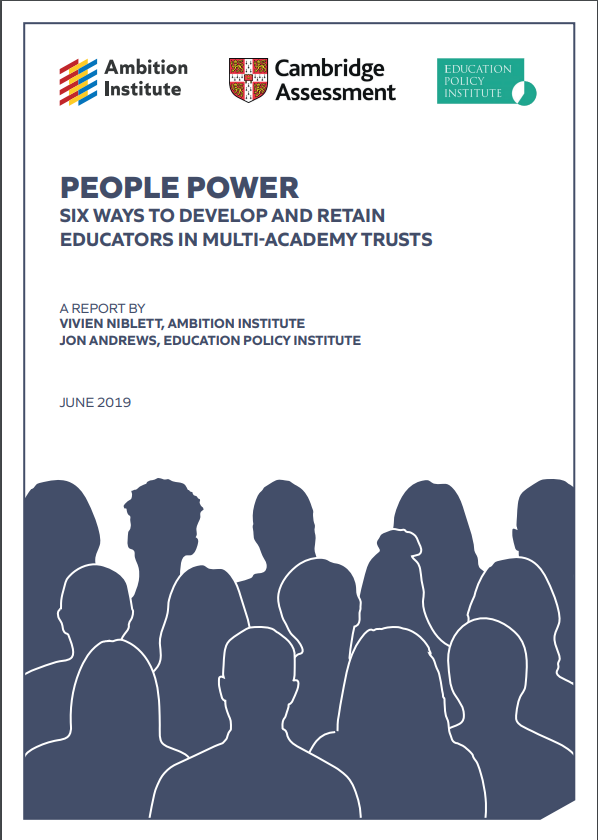This paper forms part of the report, ‘People Power: Six ways to develop and retain educators in Multi-Academy Trusts’, published by Ambition Institute, EPI and Cambridge Assessment.
The new report looks at how multi-academy trusts (MATs) – which now employ over 44 per cent of the education workforce – can drive improvements in the English education system, by supporting teachers and school leaders.
It explores the hypothesis that the academy trust model has the potential to provide a more dynamic and flexible approach to developing, retaining, progressing and deploying staff. MATs are able to deploy or develop teachers and leaders by either operating staff across multiple schools or moving staff more readily between them.
The study uses a mixed method design. Quantitative analysis was carried out by EPI, which examines seven years of school workforce data to find out how teachers and leaders are moving in the system. This is followed by a review of all existing research on school workforce development from Ambition Institute, as well as interviews with leaders of multi-academy trusts (MATs) in disadvantaged areas, to find out how they make the most of their workforces.
The full report can be read here (external site).
This additional EPI paper, ‘Teacher recruitment, progression and retention in multi-academy trusts‘ outlines the complete set of quantitative analysis that was carried out as part of the study.
Key findings: Quantitative analysis of the structure of the school workforce in multi-academy trusts
Overall, analysis of school workforce data indicates that we are not yet seeing the benefits of higher retention in MATs.
While the research found that teachers and school leaders progress faster in MATs than elsewhere in the school system – gaining promotion to senior leadership positions at a young age – it also found that there is a higher turnover of staff in these trusts, including teachers leaving the profession.
- Taken as a whole, there is no difference in the proportion of staff at different leadership levels in academies and local authority maintained schools.
- System leader trusts have a relatively high number of new entrants to the teaching workforce. One in four classroom teachers in secondary schools in system leader trusts were not in the state-funded system the year before; across all secondary schools, the figure is one in five.
- The proportion of teachers and middle leaders exiting the state-funded sector each year is higher in large academy trusts than elsewhere.
- Trusts have much higher rates of promotion from teacher to middle leadership, particularly at primary. Across all state funded schools, around 1 in 10 classroom teachers achieves a promotion in any given year. In some trusts, this increases to as many as 1 in 3.
- Both classroom teachers and middle leaders tend to achieve promotion at a younger age in large academy trusts than they do elsewhere. Secondary school teachers in system-leader trusts were on average promoted to senior leadership at the age of 35, while those in local authorities are promoted on average at the age of 38.
You can read the quantitative analysis paper here. The full report, containing a literature review, analysis from this paper, and qualitative fieldwork, can be read here (external site).
This report is supported by Cambridge Assessment.




